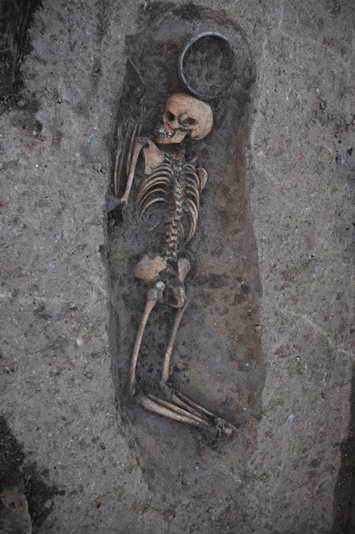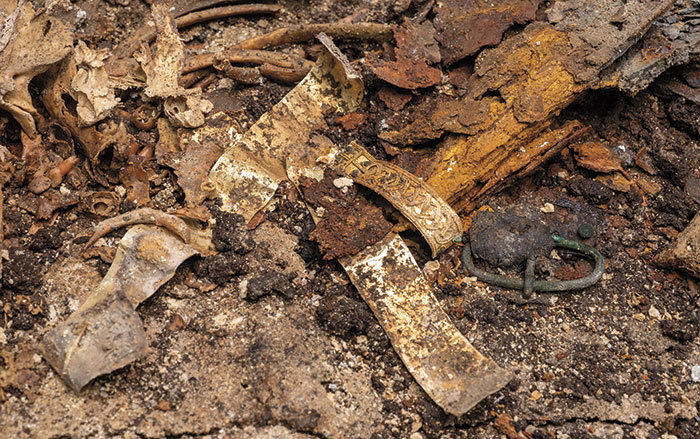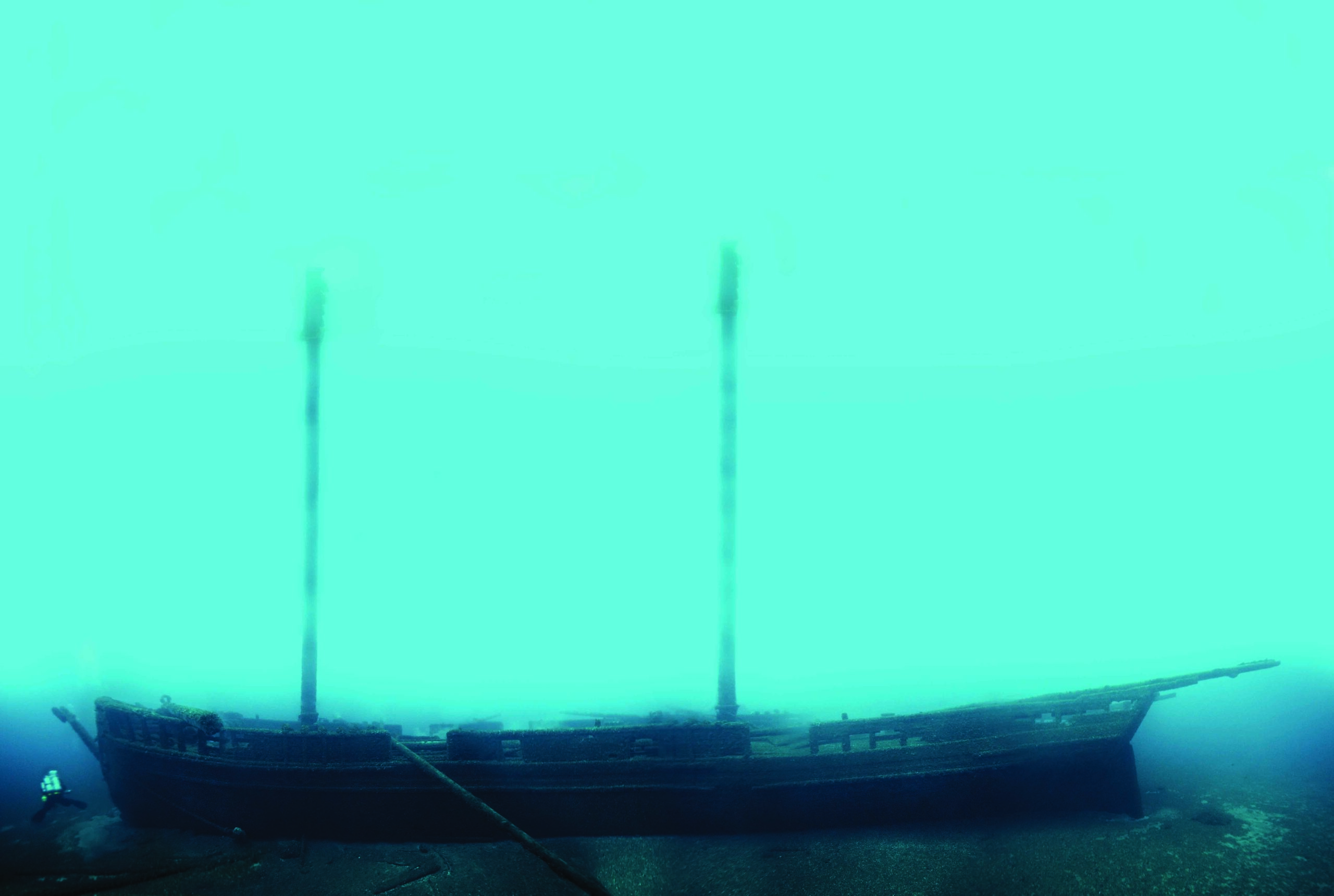
POZNAŃ, POLAND—Scientists will analyze the more than 120 skeletons recovered from the largest Roman-period necropolis in Poland to determine the diet, kinship, and origin of the people who had been buried there over a period of more than 300 years. Two stone tombs from the cemetery in Kujawy are thought to have been high-status burials. One of them contained the bodies of an adult and a young teenager. The second contained the remains of a young teenager. “The presence of juveniles in princely tombs is quite unusual, as is burying more than one person in a princely tomb,” Adriana Romańska head of the excavation for Adam Mickiewicz University, told Science & Scholarship in Poland. Flat skeletal graves, crematory urn graves, pits where cremated corpses had been interred, and an area of group burials were found. Some of the skeletons show signs of wear and tear from horseback riding and wielding a sword or spear. Cremation sites were also uncovered at the necropolis. To read about an elite Etruscan necropolis, see "Tomb of the Silver Hands."









